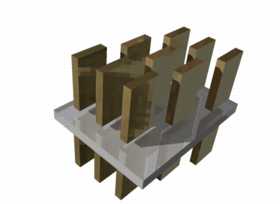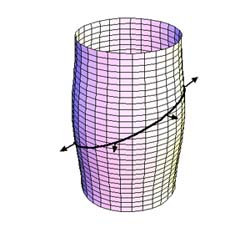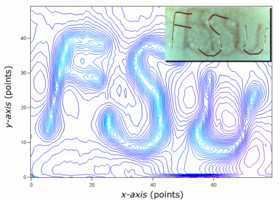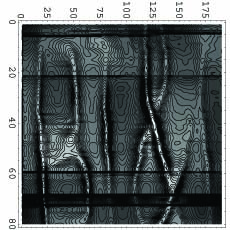
My research interests are millimeter and sub-millimeter wave spectroscopy of low-dimensional organic conducting, superconducting and magnetic systems in high magnetic fields, by employing various magnetooptical resonance techniques such as cyclotron resonance, periodic orbit resonance, ESR, etc. I am doing also development of the Near-field EMR/ESR spectroscopy instrumentation.
| Most organic conductors (Charge Transfer Salts) consist of organic donor molecules which form conducting layers, and inorganic acceptor molecules which form insulating layers. Each layer are stacked one by one which cause an anisotropic quasi-two-dimensional(q2D) or quasi-one-dimensional(q1D) conductivity (The interlayer is the most conducting plane and the intralayer direction is the least conducting axis). In recent studies, we are investing the interaction of pi and d electrons by adding magnetic ions in the insulating layers and we are performing ESR/EMR measurements to investigate its electronic states and ground states of these kinds of organic conductors. |  |
  |
| As mentioned above, most of the organic conductors have a q1D or q2D electronic system. Therefore, the Fermi surface looks like the figures shown above (Left: q1D Fermi surface , Right: q2D Fermi surface). To measure the shape of the Fermi surface is very important to investigate the electronic states and ground states of these organic conductors. The typical methods for measuring the Fermi surface in a high magnetic field are 1. Quatum Oscillations(Shubnikov-de Haas, de Haas-van Alphen Oscillations), 2. Angle Dependent MagnetoResitance Oscillation (ADMRO), and 3. Magnetooptical Measurements (Cyclotron Resonance, Periodic Orbit Resonance). We are performing all of these, however recent studies has shown that the magnetooptical resonance method is a novel but also useful technique to investigate the Fermi surface. |
 |  |
The figures in the left are our recent development of the Spatially Resolved (Near-field) ESR/EMR spectroscopy system. It is scanning a copper wire and we have done the imaging of its cavity transmission response. We hope having the imaging of the EMR signals in the near future which can be applied to a biological or geological studies. |